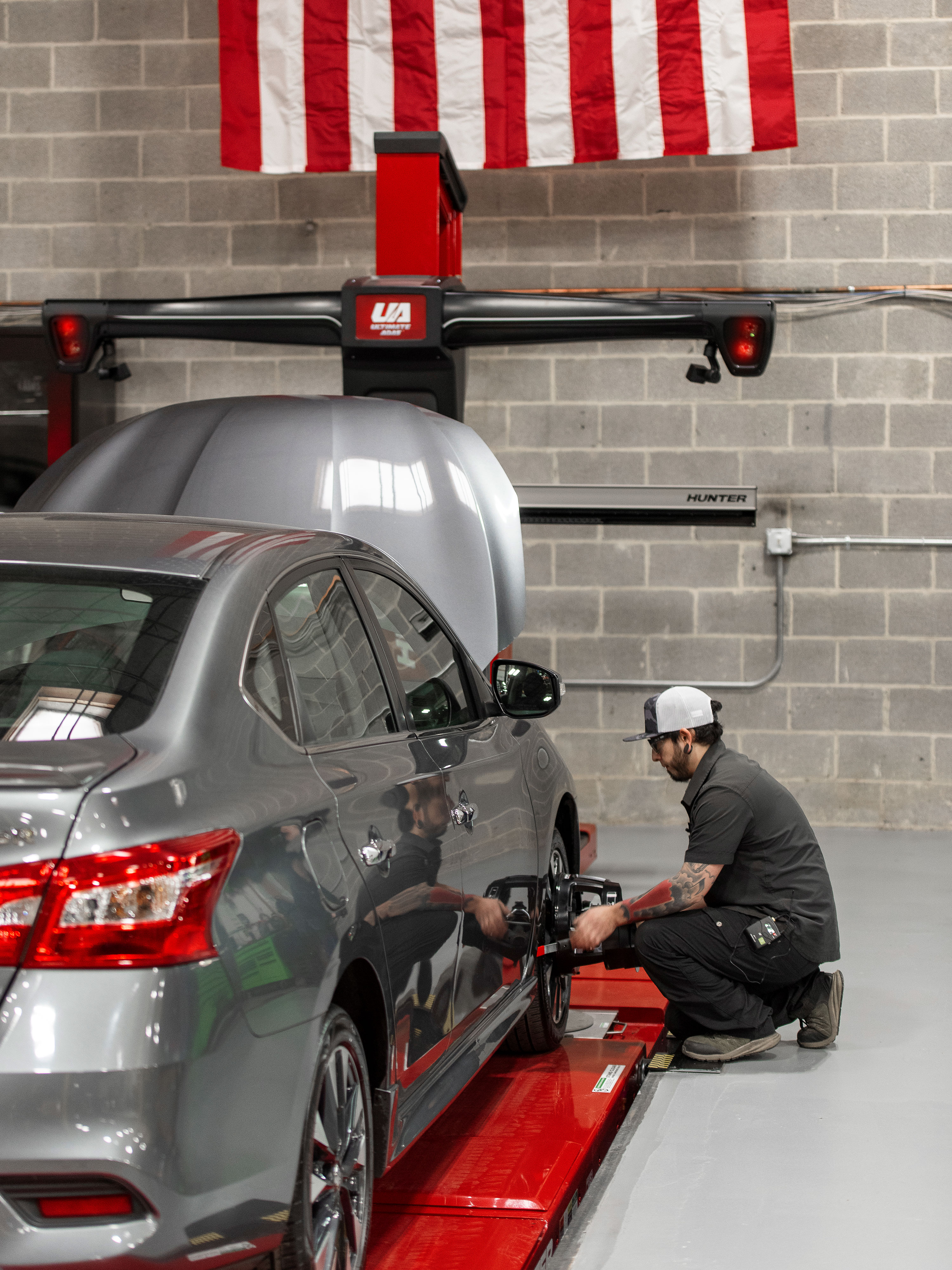Flipping the ADAS switch
Tire shops are a natural habitat for ADAS calibrations. Invite them in.
When you think of a tire shop, you think of an alignment system. And when you think of an alignment system, you think of ADAS calibrations.
OK. Maybe not just yet for tire shops.
But you should, and in time hopefully will. With the booming present and future market for ADAS calibrations – you’ve heard about all that, right? – ADAS and alignment become more paired at the hip each day.
That’s because doing one usually leads directly to doing the other. And if you’ve got room to do one, you’ve got room to do the other. And if you’re profiting from one, you’ll do even better with both.
Static ADAS calibrations seem like such a natural fit for tire shops that it’s a little surprising more aren’t doing them already. (Dynamic calibrations, which require nothing more than an equipped scan tool and a road to drive on, are always an easy option.) The holdup for static is likely a combination of two reasons: concerns about space, and concerns about equipment. And like ADAS and alignment, they intertwine.

The gateway to ADAS. Equipment first.
Calibrations are often regarded as a mysterious, exotic type of automotive service. In truth, they are not. ADAS technology itself is highly sophisticated, but performing static calibrations is just like any other type of service. You learn to do it, and then you do it. A lot.
Here’s the good news: With the aligner you already have and constantly use, you’re starting on second base. You’re halfway there.
Whenever an ADAS component is disturbed in any way – and there are quite a few ways to disturb an ADAS component, including basic tire services – a calibration is triggered. In turn, calibrations usually trigger an alignment, because if the wheels aren’t going straight, neither is the ADAS, which defeats the entire purpose. The key measurement is thrust line, not the center line. It’s impossible to find the thrust line outside of an alignment rack.
It’s a two-way street. An alignment itself is among the things that can trigger a calibration, for the same reason: ADAS cameras and radar need to precisely follow where the vehicle is going, and not where it used to be going or should be going. This is why alignments and ADAS go hand in hand. Between the two of them, a tire shop can keep plenty busy.
If an aligner starts you at second base, adding a static calibration target setup gets you rounding third and heading for home. You’re not creating a brand-new workflow so much as taking an existing revenue stream and widening it. As opportunities go, this is a gift.


